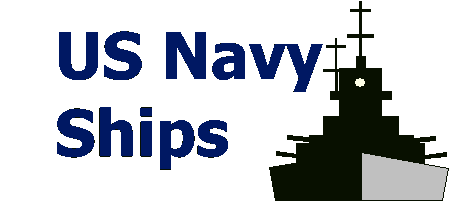



 An amphibious operation is a military operation launched from
the sea by naval and landing forces embarked in ships or craft
involving a landing on a hostile or potentially hostile shore. An amphibious
operation requires extensive air participation and is characterized
by closely integrated efforts of forces trained, organized, and
equipped for different combat functions. The complexity of amphibious operations and the
vulnerability of forces engaged in these operations require an
exceptional degree of unity of effort and operational coherence. The
difficulties involved in conducting amphibious operations will normally
dictate that the combatant commander will participate in planning,
theater integration, and support.
An amphibious operation is a military operation launched from
the sea by naval and landing forces embarked in ships or craft
involving a landing on a hostile or potentially hostile shore. An amphibious
operation requires extensive air participation and is characterized
by closely integrated efforts of forces trained, organized, and
equipped for different combat functions. The complexity of amphibious operations and the
vulnerability of forces engaged in these operations require an
exceptional degree of unity of effort and operational coherence. The
difficulties involved in conducting amphibious operations will normally
dictate that the combatant commander will participate in planning,
theater integration, and support.
Amphibious operations are designed and conducted primarily to:
The essential usefulness of an amphibious operation stems from its mobility and flexibility (i.e., the ability to concentrate balanced forces and strike with great strength at a selected point in the hostile defense system). The amphibious operation exploits the element of surprise and capitalizes on enemy weaknesses by projecting and applying combat power at the most advantageous location and time. The threat of an amphibious landing can induce enemies to divert forces, fix defensive positions, divert major resources to coastal defense, or disperse forces. Such a threat may result in the enemy making expensive and wasteful efforts in attempting to defend their coastlines. The salient requirement of an amphibious assault, which is the principal type of amphibious operation, is the necessity for swift, uninterrupted buildup of sufficient combat power ashore from an initial zero capability to full coordinated striking power as the attack progresses toward amphibious task force (ATF) final objectives.
Amphibious operations may involve high-risk, high-payoff efforts to accomplish critical missions. Complete appreciation of the amphibious operation must include recognition of its chief limitation; i.e. the vulnerability of the landing force during the early hours of the operation. Strength ashore must be built up from zero to a coordinated, balanced force capable of accomplishing the assigned mission. Throughout the amphibious operation, but most particularly during the highly vulnerable ship-to-shore movement phase, success may hinge on the ability to integrate both land-based and maritime air defense resources to isolate the area of operations from hostile air platforms and airborne weapons attack to the maximum extent possible. The conduct of landings from beyond enemy visual and radar range is a technique that employs maneuver warfare concepts such as surprise, operational speed, operational flexibility, and tactical mobility to achieve a tactical advantage over the enemy that can be decisively exploited while minimizing risk to assault shipping. A beachhead is a designated area on a hostile or potentially hostile shore which, when seized and held, ensures the continuous landing of troops and materiel and provides maneuver space requisite for subsequent projected operations ashore. It is the physical objective of an amphibious operation. The landing area is that part of the objective area within which the landing operations of an amphibious force are conducted. It includes the beach, the approaches to the beach, the transport areas, the fire support areas, the air occupied by close supporting aircraft, and the land included in the advance inland to the initial objective. A landing beach is that portion of a shoreline usually required for the landing of a battalion landing team. However, it may also be that portion of a shoreline constituting a tactical locality (such as the shore of a bay) over which a force larger or smaller than a battalion landing team may be landed. A Helicopter Landing Zone [HLZ] is a specified ground area for landing assault helicopters to embark or disembark troops and/or cargo. A landing zone may contain one or more landing sites. Naval amphibious forces provide flexible and adaptive combined-arms crisis-response capability, and a self-sustainable forcible-entry capability. Modern U.S. Navy amphibious assault ships are the primary landing ships for assault operations of Marine expeditionary units. These ships use Landing Craft Air Cushion (LCAC), conventional landing craft and helicopters to move Marine assault forces ashore. In a secondary role, using AV-8B Harrier aircraft and anti-submarine warfare helicopters, these ships perform sea control and limited power projection missions. Amphibious warships are uniquely designed to support assault from the sea against defended positions ashore. They must be able to sail in harm's way and provide a rapid built-up of combat power ashore in the face of opposition. The United States maintains the largest and most capable amphibious force in the world. A total of 43 amphibious ships, excluding the two command ships, participated in Desert Shield and Desert Storm, 73 percent of all such ships in the Navy at the time. Along with their 18,000 embarked Marines prepared for amphibious assaults, they conducted practice forays along the Omani and Saudi Arabian coasts, assisted in boardings and searches of merchantmen whose uncooperative masters provoked more forcible measures, and provided support for raids on Iraqi-held Kuwaiti islands. The threat posed by this presence to Iraqi forces in Kuwaiti led to 7-11 Iraqi divisions deploying for an invasion that never came. During the Cold War, Marines responded to crises about three to four times a year, depending upon what was counted. In the three years immediately following Desert Storm, they were called on to meet some 20 crises--about six times annually. The increase reflects a greater reliance on Navy and Marines aboard ships, as overseas bases diminish. To meet such crises, three Marine Expeditionary units--each with 2,000 Marines embarked aboard ships--are routinely deployed throughout the globe. The current modernization plan will provide amphibious lift for 2.5 Marine expeditionary brigade (MEB) equivalents. The future amphibious force is being shaped to allow the formation of 12 amphibious ready groups (ARGs) to meet forward-presence, contingency, and warfighting requirements. Ultimately, the amphibious force will be composed of 12 LHA/Ds, 12 LPD 17s, and 12 LSD 41/49s; capable of forming 12 ARGs (or operating independently when necessary) and lifting 2.5 MEB equivalents in all five lift parameters (vehicle square foot stowage, cargo cubic capacity, troop capacity, vertical take off and landing capacity, and LCAC capacity).